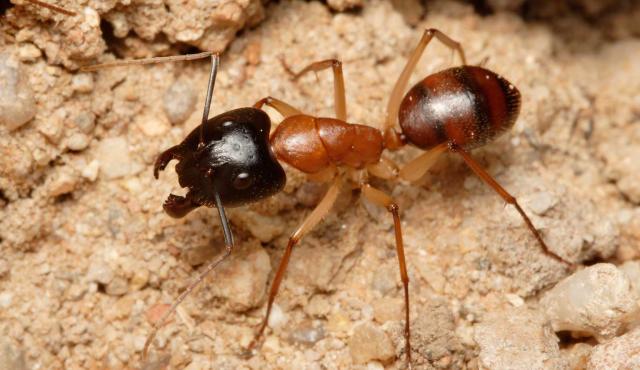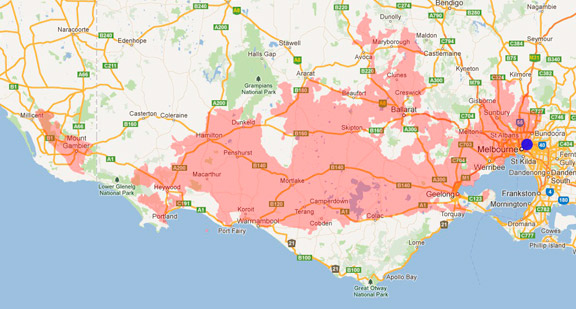A range of teacher professional learning programs will be developed to accompany the Biodiversity of the Western Volcanic Plains online outreach...

Sugar Ant
Camponotus sp.
There are more than one hundred Australian species of sugar ants. They are one of the commonest type of ants.
| Details | Description |
| Type | Invertebrate |
| Group | Insect - Ant |
| Identifying Characteristics | |
| Distinctive Markings | Thorax and legs orange-brown. |
| Diet | Herbivore. Feeds on nectar. |
| Habitat | Most species of sugar ants nest in the soil, some nest in rotten logs on the ground. Occurs in urban areas, forests, woodland, heath, arid areas. |
| Native Status | Native to Australia |
| Bites/Sting | Sugar ants cannot sting but spray formic acid from their abdomen. Large workers of some ant species have powerful jaws which can give a painful bite. |
| Taxonomy | |
| Phylum | Arthropoda |
| Class | Insecta |
| Order | Hymenoptera |
| Family | Formicidae |
| Genus | Camponotus |
| Species | sp. |

Distribution maps indicate current and historic locations where species have been sighted.
Source: Atlas of Living Australia
| Conservation Status | |
| DEPI Advisory List | Not listed |
| FFG Act | Not listed |
| EPBC Act | Not listed |
The conservation status of species is listed within Victoria and Australia.
The Department of Environment and Primary Industry (DEPI) Advisory List consists of non-statutory advisory lists of rare or threatened flora and fauna within Victoria.
The Flora and Fauna Guarantee Act 1988 (FFG Act) lists threatened species in Victoria. Under the Act, an Action Statement is produced for each listed species.
The Environment Protection and Biodiversity Conservation Act 1999 (EPBC Act) is the Australian Government’s key piece of environmental legislation, listing nationally threatened native species and ecological communities.



